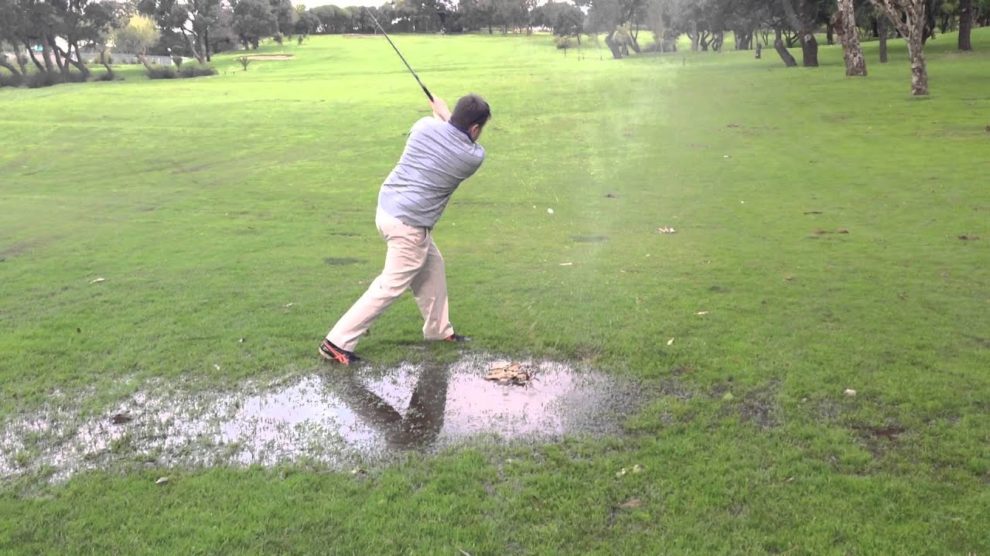Golf courses are outside, so naturally they're susceptible to the weather and whatever else Mother Nature throws at it. That means it rains on golf courses, and sometimes is rains so much at a golf course that the water puddles up at different places on a course where it doesn't typically belong -- fairways, rough, bunkers and greens.
Even though golfers are told to "play it as it lies" most of the time, the rules of golf offer some help when a golfer's ball winds up in water that's not normally there.

Can golfers move their golf ball out of a puddle on the golf course?
Golfers can move their ball out of a puddle or standing water on a golf course when that water is deemed to be in a place where water isn't normally -- for example, a stream or a lake or a river. The golf term for this type of water is "temporary water" or "casual water."
Casual water, or temporary water, marks an area on the golf course that isn't in a penalty area or hazard where a golfer can bring water out of the ground by gently pressing on it or where standing water is clearly gathered above the surface of the ground.
Golfers can take free relief from puddles in the general area of the golf course when their ball is in the puddle or their stance or intended swing path is impacted by the water. To take free relief, a golfer is to first find the nearest point of complete relief -- the spot on the course nearest to where your ball lies, no nearer the hole, where they could play their next stroke with no interference from the ground under repair. Then the golfer should drop a ball within one club length of that point not nearer the hole.
The caveat to this is when the puddle is in a bunker. A golfer must take relief in the bunker itself, playing their next shot from the sand, not from grass outside the bunker.
The rules around puddles on the course also apply to winter precipitation. Snow and naturally occurring ice can be considered either casual water or loose impediments, at the option of the player. In those situations, you can either move snow and ice away from your ball, or you can choose to take free relief from it.

